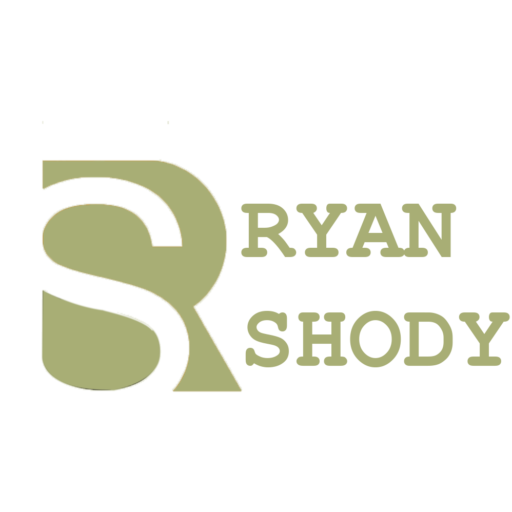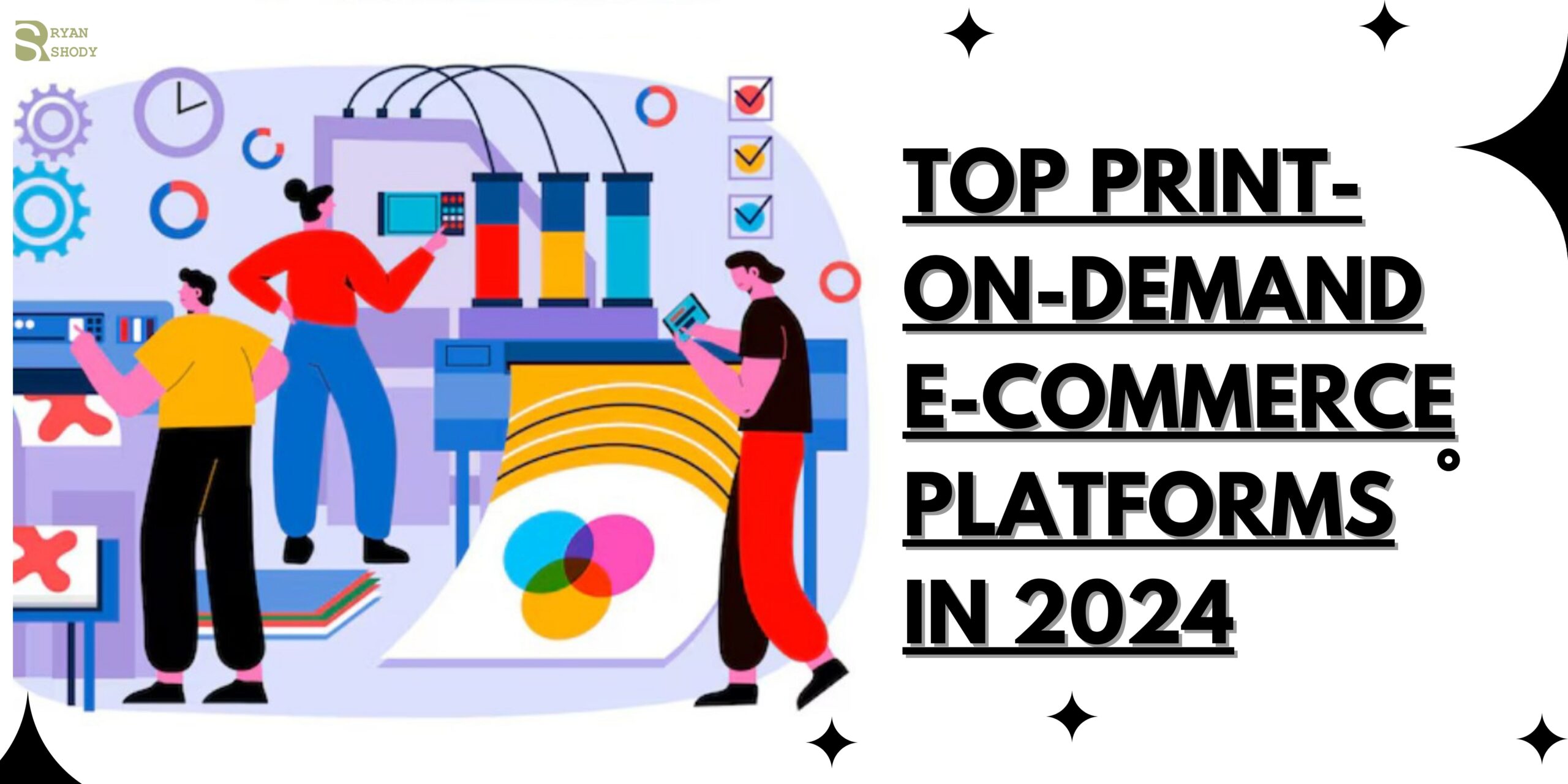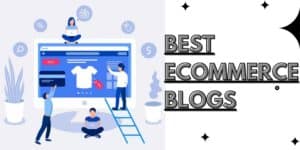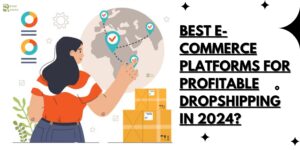In today’s rapidly evolving e-commerce landscape, selecting the right Print-on-Demand E-Commerce Platforms can make a significant difference in your business’s success.
With the growth of online businesses, these platforms have become indispensable for entrepreneurs looking to offer custom products without holding inventory.
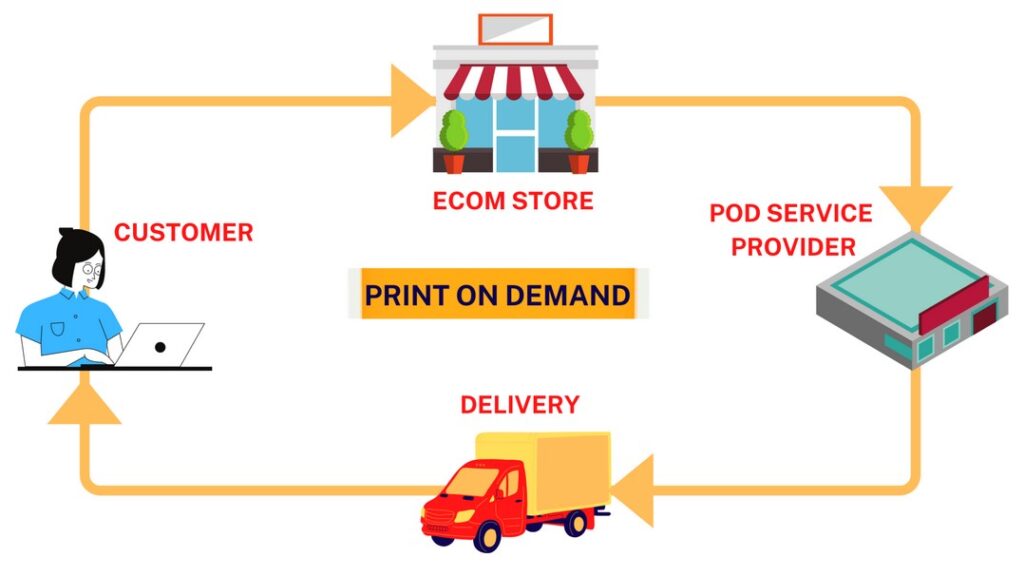
In this comprehensive review, we’ll explore the top platforms available in 2025, providing you with the insights needed to make an informed decision that aligns with your business goals.
Verdict
Print-on-Demand E-Commerce Platforms are essential for any business looking to offer customized products without the hassle of managing inventory.
Each platform reviewed here offers unique features catering to different business needs, from extensive product catalogs with Printful to the ease of use with Printify.
When choosing a platform, consider your specific requirements, integration options, and how well the platform aligns with your overall business strategy.
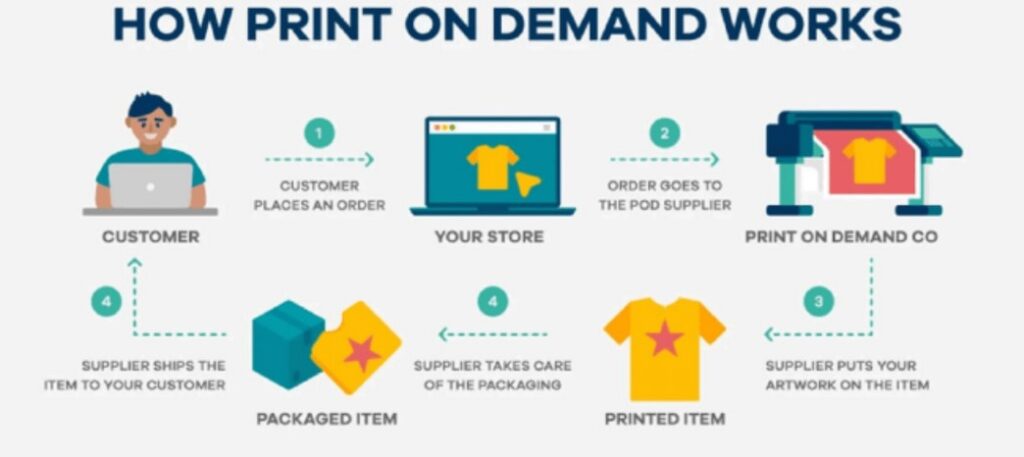
By selecting the right platform, you can enhance your product offerings, streamline operations, and ultimately drive better results for your business.
What Are Print-on-Demand E-Commerce Platforms?
Print-on-Demand E-Commerce Platforms are specialized services that allow individuals and businesses to create and sell custom-designed products without holding any inventory.
These platforms typically handle everything from printing and packaging to shipping directly to the customer.
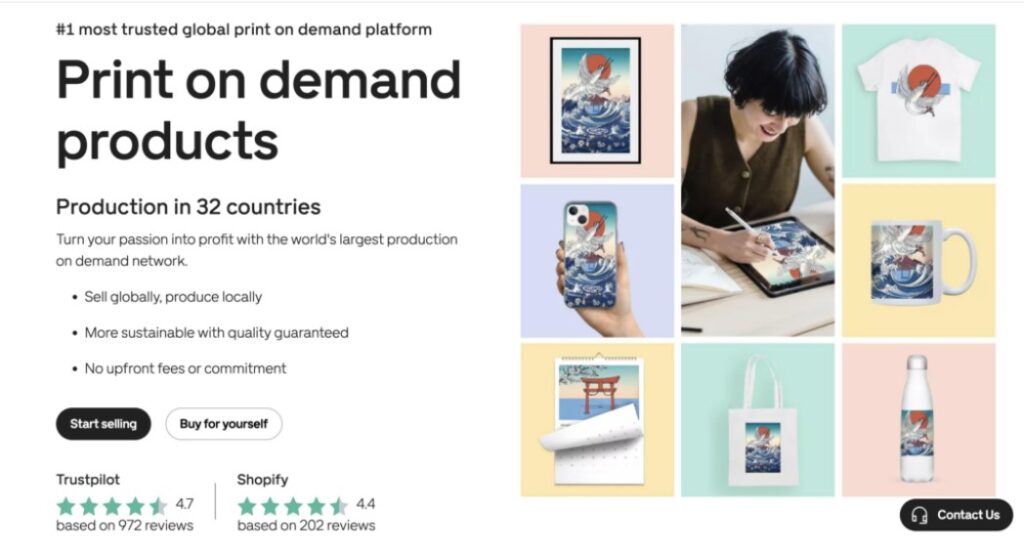
By utilizing a print-on-demand service, businesses can offer a wide range of products, such as clothing, accessories, home decor, and more, all customized to their brand’s specifications.
Key Features
When selecting a Print-on-Demand E-Commerce Platform, there are several key features to consider that will greatly influence the platform’s effectiveness in supporting your business:
- Product Catalog: The variety and quality of products available for customization.
- Integration: The ability to seamlessly integrate with popular e-commerce platforms like Shopify, Etsy, and WooCommerce.
- Fulfillment Speed: How quickly orders are processed and shipped to customers.
- Customization Options: The range of customization options available for products, including printing techniques and materials.
- Pricing: The cost of using the platform, including any setup fees, monthly subscriptions, and the pricing of individual products.
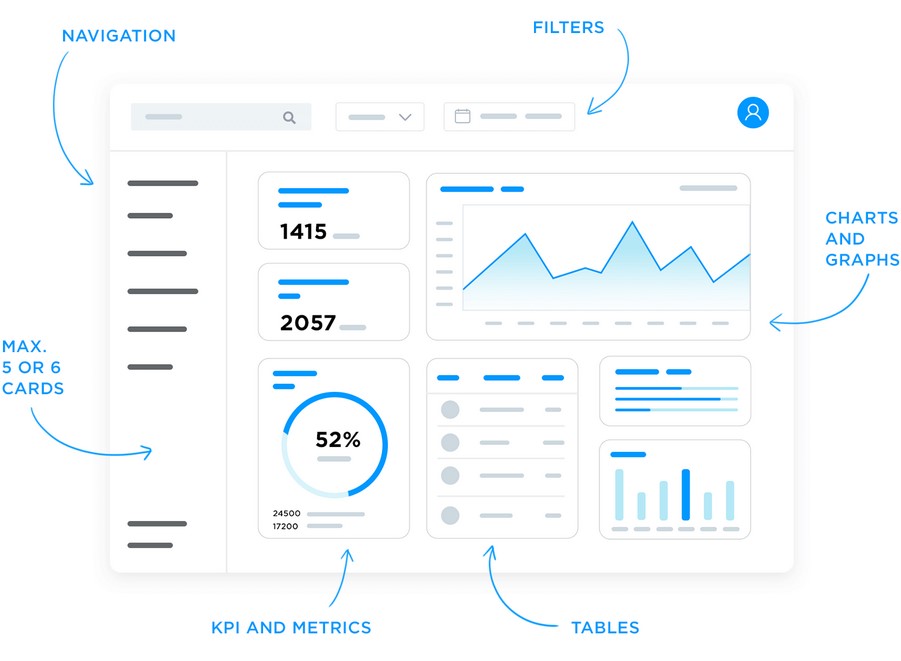
What is the Best Print-on-Demand E-Commerce Platform?
When determining the best Print-on-Demand E-Commerce Platforms for your needs, it’s essential to consider the specific features, pricing, and user experience offered by each platform.
In this review, we selected the platforms based on their comprehensive feature sets, ease of use, customer support, and scalability.
These platforms have proven themselves in the market by consistently delivering value to users across different industries.
1. Printful
Best For: Comprehensive Print-on-Demand services with seamless integration for multiple platforms.
Best Features: Extensive product catalog and automated order fulfillment.
Product Description: Printful is one of the leading Print-on-Demand E-Commerce Platforms, known for its extensive product range and high-quality printing services.
The platform integrates seamlessly with major e-commerce sites like Shopify, WooCommerce, and Etsy, making it a versatile choice for businesses of all sizes.
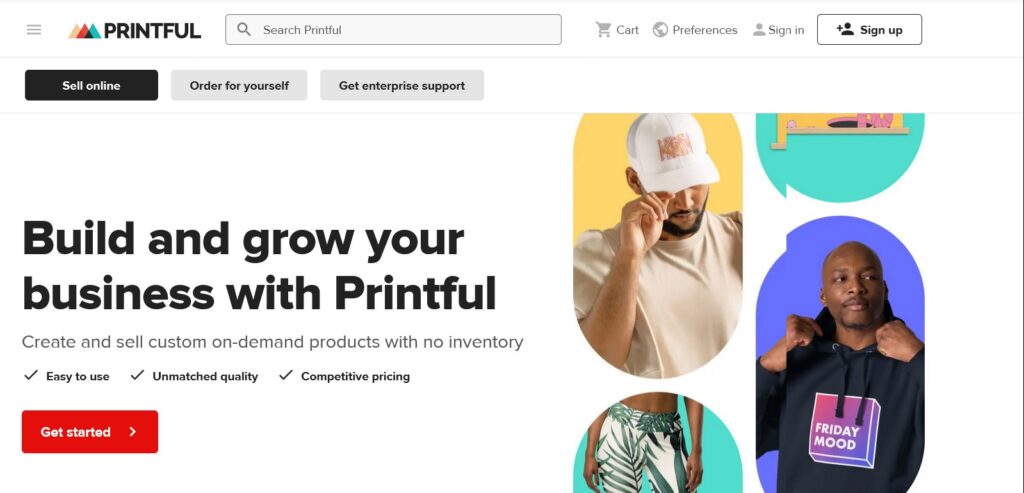
Printful offers a wide variety of customizable products, including apparel, home decor, accessories, and more.
Its user-friendly interface and automated order processing system make it easy for businesses to manage their operations efficiently.
Ryan’s Advice: Ideal for businesses looking to offer a diverse range of high-quality products with minimal hassle.
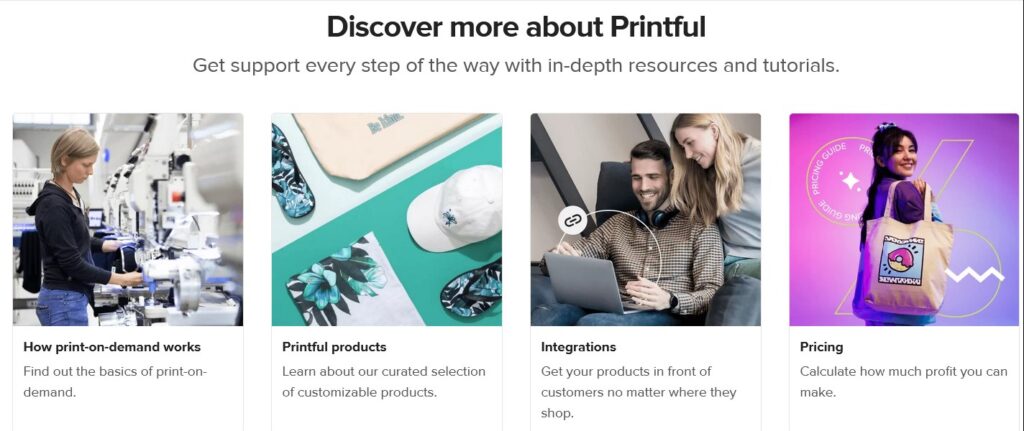
Best Features for Print-on-Demand E-Commerce Platforms:
- Wide Product Range: Over 200 customizable products available.
- Automated Order Fulfillment: Seamless integration with e-commerce platforms for automatic order processing.
- Global Fulfillment Centers: Fast shipping with international coverage.
- Mockup Generator: Easy-to-use tool for creating product mockups.
- No Upfront Costs: Pay only when you sell a product, making it a low-risk option.
Product Pros and Cons:
- Pros:
- Extensive product variety
- High-quality printing and materials
- Robust integration options
- No upfront costs
- Reliable customer support
- Cons:
- Slightly higher base prices compared to some competitors
- Limited customization on certain products
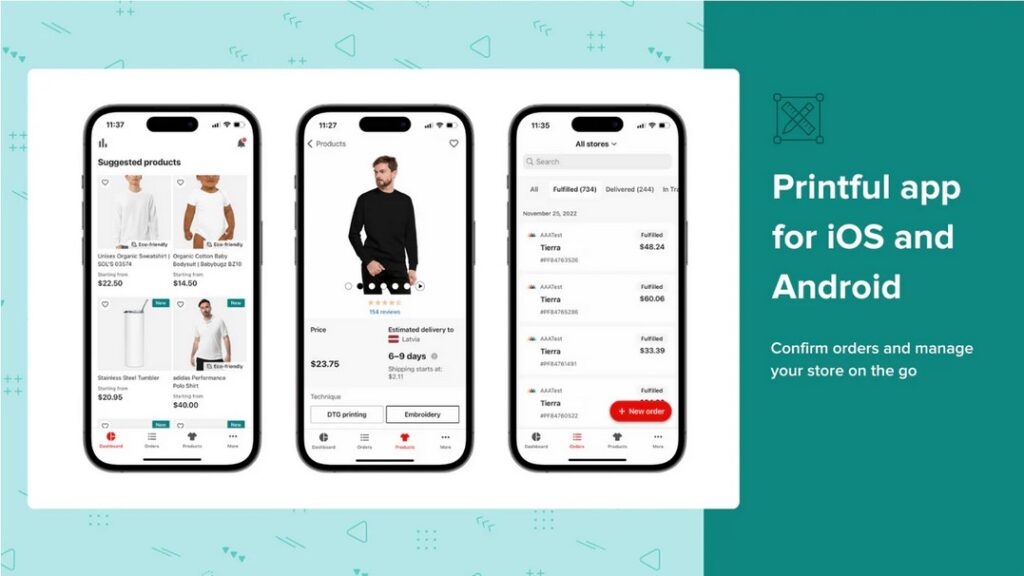
User Experiences and Case Studies:
- Small Business: A clothing brand increased its product offerings by 50% without the need for inventory.
- Online Artist: A digital artist expanded their product line to include apparel and home decor, resulting in a 30% increase in sales.
- E-commerce Store: An online store streamlined its operations by integrating Printful, reducing fulfillment times by 40%.
Pricing and Subscription:
- No Monthly Fees: Free to use, pay per product sold.
- Product Prices: Vary by item, e.g., T-shirts from $8, mugs from $7.
- Additional Services: Optional branding services like custom labels, packaging inserts, and more.
2. Printify
Best For: Affordable and flexible print-on-demand services for small to medium-sized businesses.
Best Features: Multiple print providers and a wide range of product options.
Product Description: Printify is a popular Print-on-Demand E-Commerce Platform known for its affordability and flexibility.
It partners with a network of print providers across the globe, giving businesses the freedom to choose the best provider based on price, location, and product quality.
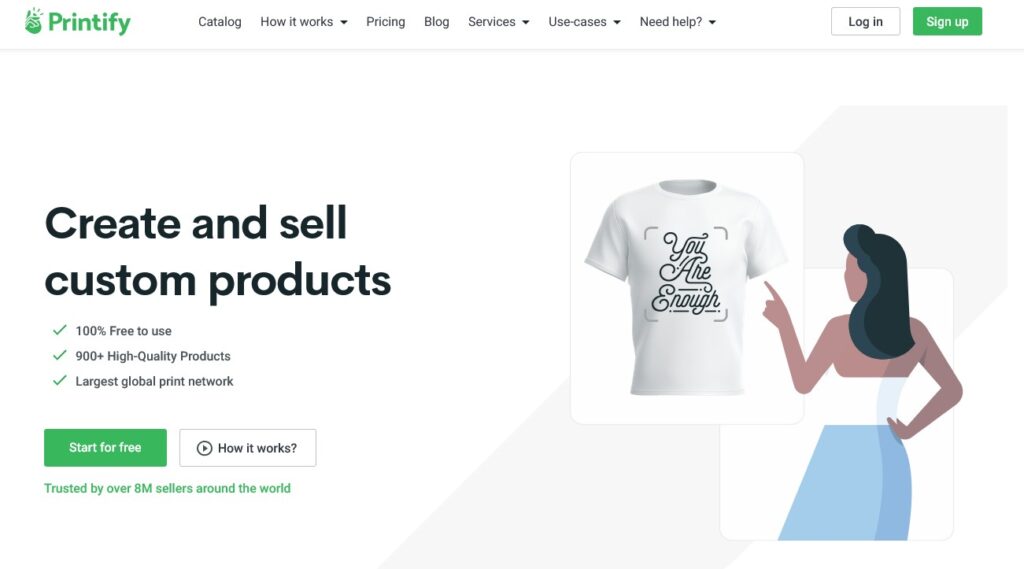
Printify offers a wide variety of customizable products, including clothing, accessories, and home goods.
The platform is user-friendly and integrates with major e-commerce platforms like Shopify, Etsy, and WooCommerce.
Ryan’s Advice: Perfect for businesses looking to control costs while offering a broad product range.

Best Features for Print-on-Demand E-Commerce Platforms:
- Multiple Print Providers: Choose from over 90 print providers worldwide.
- Product Variety: Extensive catalog with over 300 products.
- Flexible Pricing: Compare prices between providers to optimize costs.
- Automated Fulfillment: Orders are automatically sent to the chosen print provider.
- Easy Integration: Seamlessly integrates with major e-commerce platforms.
Product Pros and Cons:
- Pros:
- Cost-effective options
- Wide range of products and providers
- Easy-to-use platform
- No upfront costs
- Flexibility in choosing providers
- Cons:
- Quality may vary depending on the provider
- Longer shipping times for international orders
- Limited branding options
User Experiences and Case Studies:
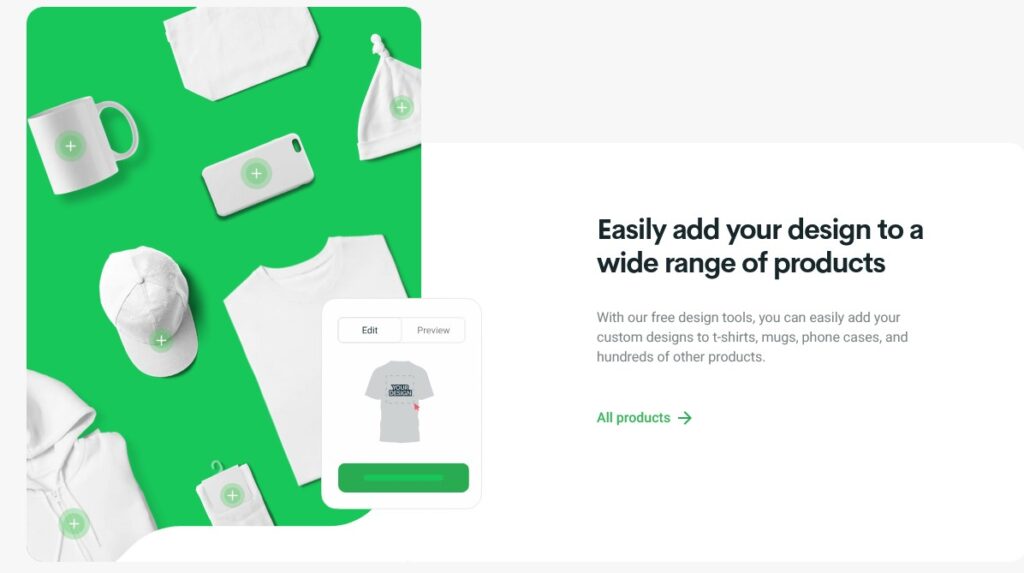
- Small Business Owner: Reduced production costs by 20% by switching to Printify.
- Startup: Successfully launched a new product line, achieving a 25% profit margin.
- Freelancer: Managed multiple client accounts with ease, increasing customer satisfaction.
Pricing and Subscription:
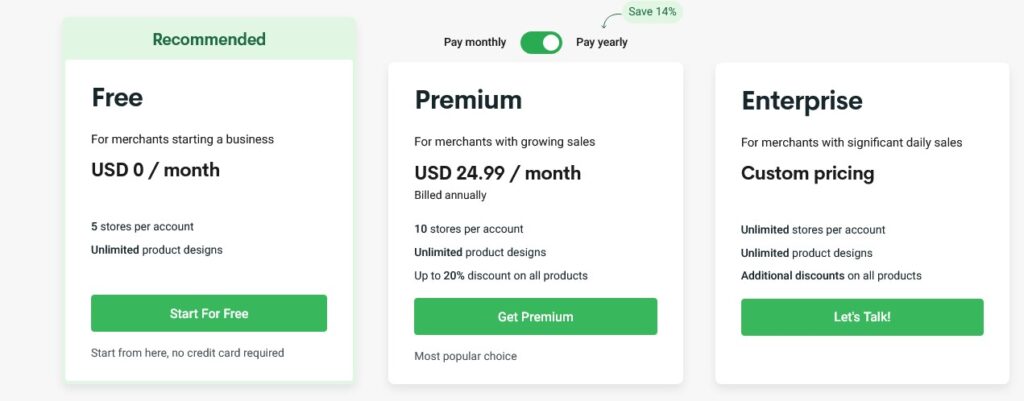
- Free Plan: Basic features with access to all products and providers.
- Premium Plan: $24.99/month, includes discounts of up to 20% on all products.
- Enterprise Plan: Custom pricing for large businesses with high-volume needs.
3. Teespring (Spring)
Best For: Creators and influencers looking to monetize their content with custom merchandise.
Best Features: Simple setup and integration with social media platforms.
Product Description: Teespring, now known as Spring, is a Print-on-Demand E-Commerce Platform designed specifically for creators, influencers, and small businesses looking to monetize their online presence.
The platform offers a straightforward setup process and integrates directly with social media platforms like YouTube and Instagram, making it easy to promote and sell custom merchandise.
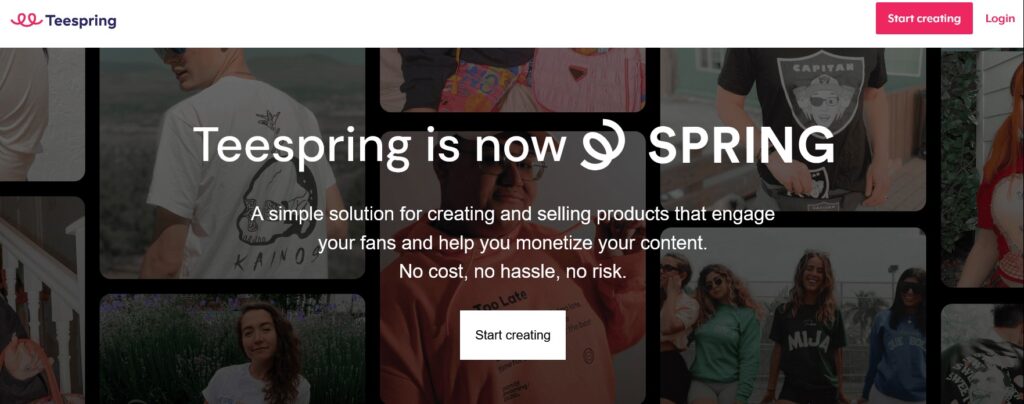
Spring’s product catalog includes apparel, accessories, and home goods, all customizable to match your brand’s aesthetic.
Ryan’s Advice: Best suited for content creators looking to easily monetize their audience with branded merchandise.
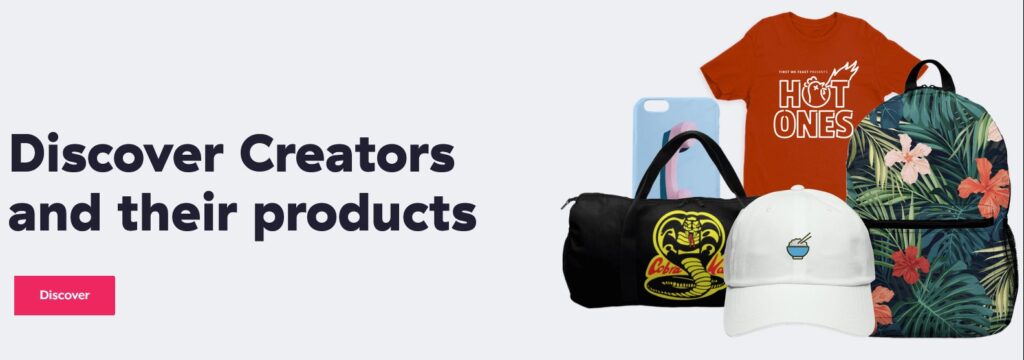
Best Features for Print-on-Demand E-Commerce Platforms:
- Direct Social Media Integration: Sell products directly through YouTube, Instagram, and more.
- Easy Setup: Simple, user-friendly interface for quick product launches.
- Custom Storefronts: Create a branded storefront to showcase your products.
- No Upfront Costs: Free to use, with profits made from each sale.
- On-Demand Fulfillment: Orders are printed and shipped as they are placed, reducing inventory risk.
Product Pros and Cons:
- Pros:
- Easy integration with social media
- No upfront costs
- User-friendly interface
- Customizable storefronts
- On-demand fulfillment minimizes inventory risk
- Cons:
- Limited customization options compared to other platforms
- Higher base prices can affect profit margins
- Customer support can be slow during peak periods
User Experiences and Case Studies:
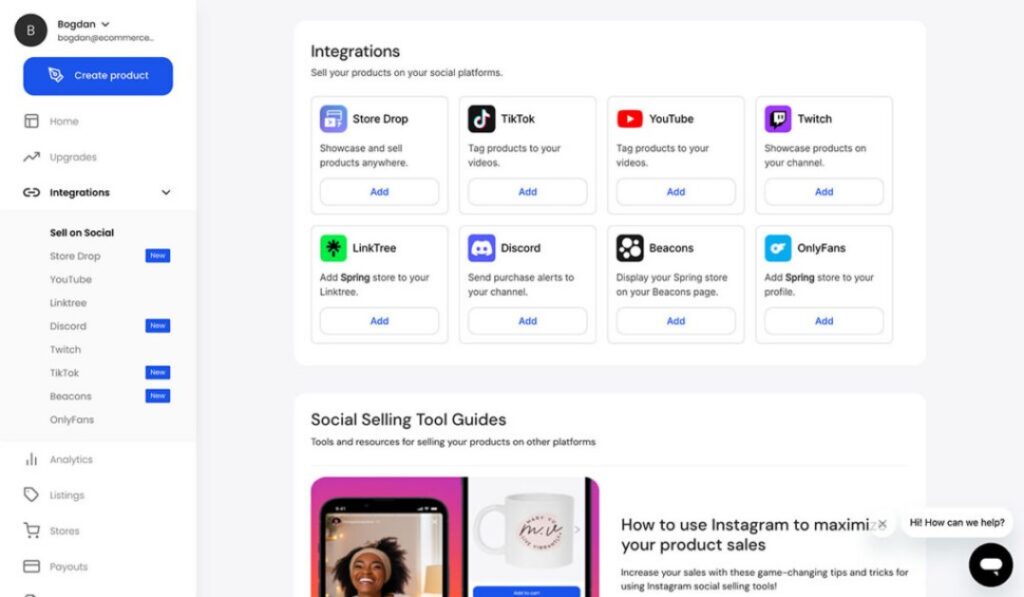
- Influencer: Monetized YouTube channel by selling custom merchandise, resulting in a 15% increase in revenue.
- Small Business: Launched a successful merch line, achieving a 40% profit margin through social media promotion.
- Artist: Used Teespring to create and sell custom artwork on apparel, growing their online presence and fanbase.
Pricing and Subscription:
- Free to Use: No upfront costs; profit is made from the sale of products.
- Product Prices: Apparel starts at $10, accessories from $5.
- Additional Services: Custom store setup, marketing tools, and branding options available.
4. Redbubble
Best For: Artists and designers looking to sell unique and creative products.
Best Features: Wide reach and a strong community of artists.
Product Description: Redbubble is a Print-on-Demand E-Commerce Platform that caters specifically to artists, designers, and creative individuals.
The platform allows users to upload their designs and sell them on a wide range of products, including clothing, home decor, and accessories.
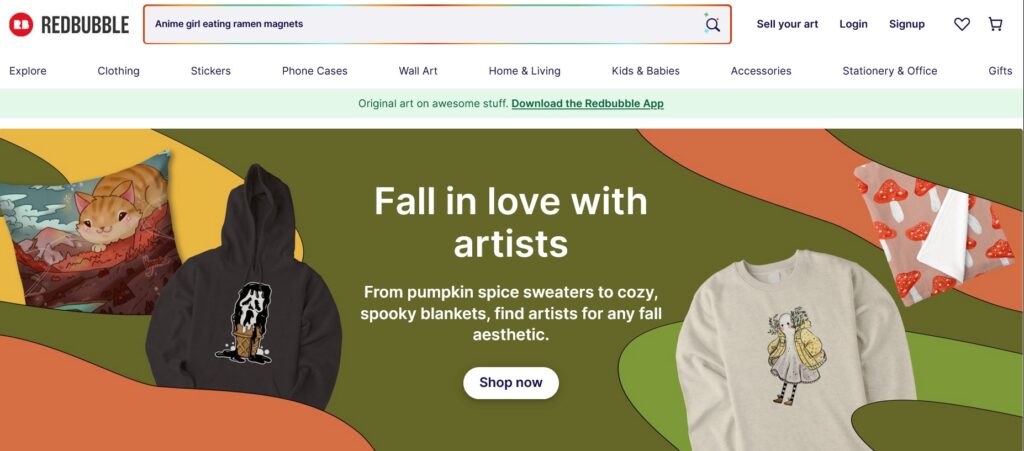
Redbubble handles all aspects of the fulfillment process, from printing to shipping, allowing artists to focus on their creativity.
The platform also provides a marketplace where customers can browse and purchase designs from various artists, offering exposure to a global audience.
Ryan’s Advice: Ideal for creatives who want to reach a broad audience and monetize their unique designs.

Best Features for Print-on-Demand E-Commerce Platforms:
- Global Marketplace: Reach a worldwide audience through Redbubble’s marketplace.
- Diverse Product Range: Sell your designs on over 60 different products.
- Community Engagement: Connect with other artists and customers through Redbubble’s active community.
- Automatic Fulfillment: Redbubble manages printing, packaging, and shipping.
- No Upfront Costs: Free to use; artists earn a margin on each sale.
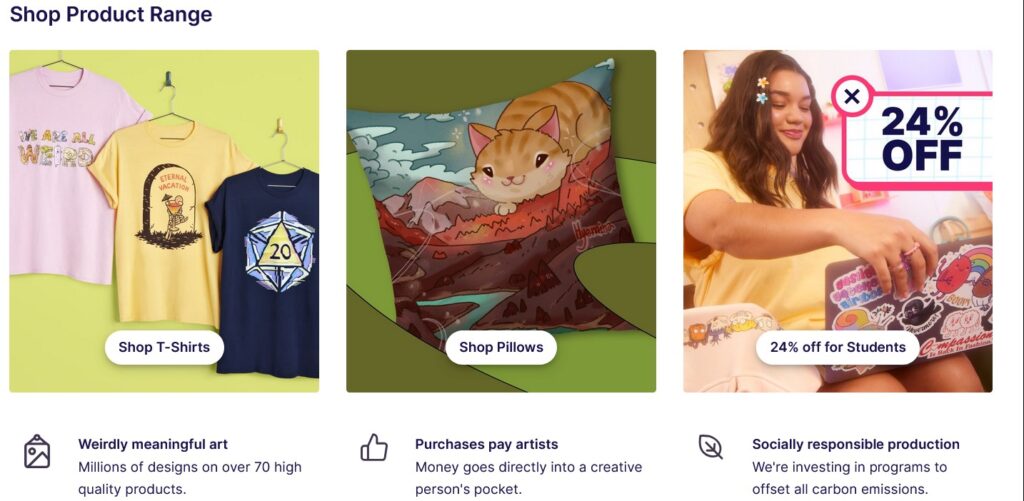
Product Pros and Cons:
- Pros:
- Large and active artist community
- Extensive product variety
- No upfront costs
- Easy-to-use design upload process
- Global reach and exposure
- Cons:
- Lower profit margins due to Redbubble’s cut
- Limited control over branding and packaging
- Competitive marketplace can make it hard to stand out
User Experiences and Case Studies:
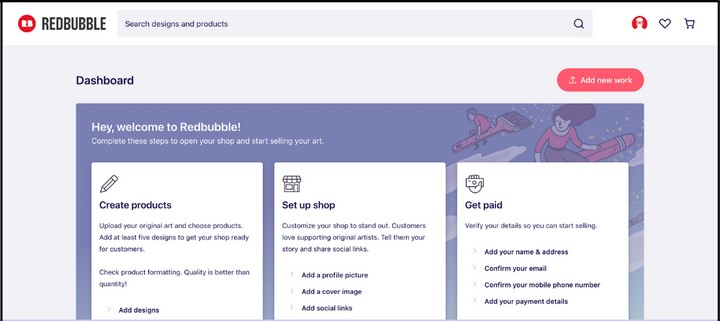
- Freelance Artist: Built a successful side income by selling art on Redbubble, generating a 25% increase in annual earnings.
- Designer: Expanded their brand by offering unique designs on multiple products, resulting in higher customer engagement.
- Hobbyist: Turned a passion for design into a profitable business, with consistent monthly sales from Redbubble’s marketplace.
Pricing and Subscription:
- Free to Use: No costs to upload designs or maintain a shop.
- Product Prices: Varies by product; artists set their profit margin.
- Additional Services: Marketing support and analytics tools available for artists.
5. Gooten
Best For: Businesses looking for a customizable and scalable print-on-demand solution.
Best Features: Flexible fulfillment network and a wide range of product customization options.
Product Description: Gooten is a Print-on-Demand E-Commerce Platform designed for businesses that require a highly customizable and scalable solution. Unlike some other platforms, Gooten offers a global network of manufacturers, allowing for flexible and reliable order fulfillment.
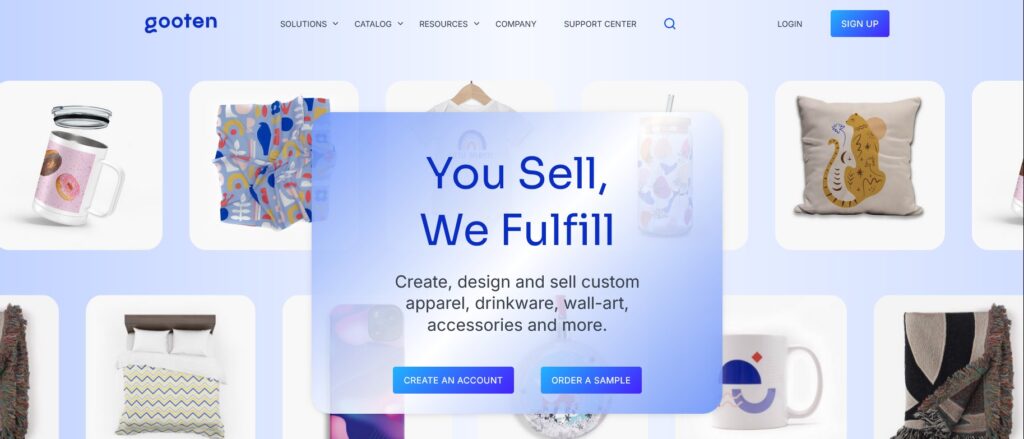
The platform integrates with popular e-commerce solutions like Shopify, making it easy to manage your store and orders. Gooten offers a broad product catalog, including apparel, accessories, home goods, and more, all customizable to your brand’s specifications.
Ryan’s Advice: Highly recommended for businesses looking to scale their operations with a reliable and flexible fulfillment network.
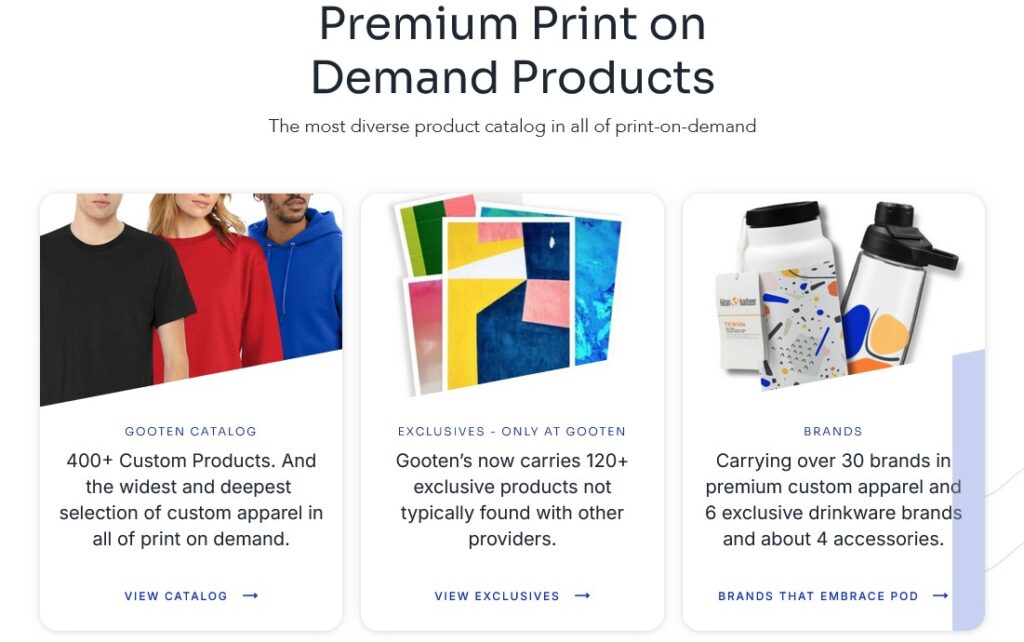
Best Features for Print-on-Demand E-Commerce Platforms:
- Global Fulfillment Network: Access to a network of manufacturers worldwide.
- Customizable Products: Extensive customization options, including various printing techniques.
- Seamless Integration: Integrates easily with platforms like Shopify and Etsy.
- Automated Fulfillment: Orders are automatically processed and sent to the nearest manufacturer.
- Scalable Solution: Ideal for businesses looking to grow without being limited by their fulfillment provider.
Product Pros and Cons:
- Pros:
- Highly customizable products
- Flexible fulfillment options
- Reliable global network
- No upfront costs
- Scalable for growing businesses
- Cons:
- Requires some technical setup for integration
- Limited branding options
- Variable shipping times based on manufacturer location
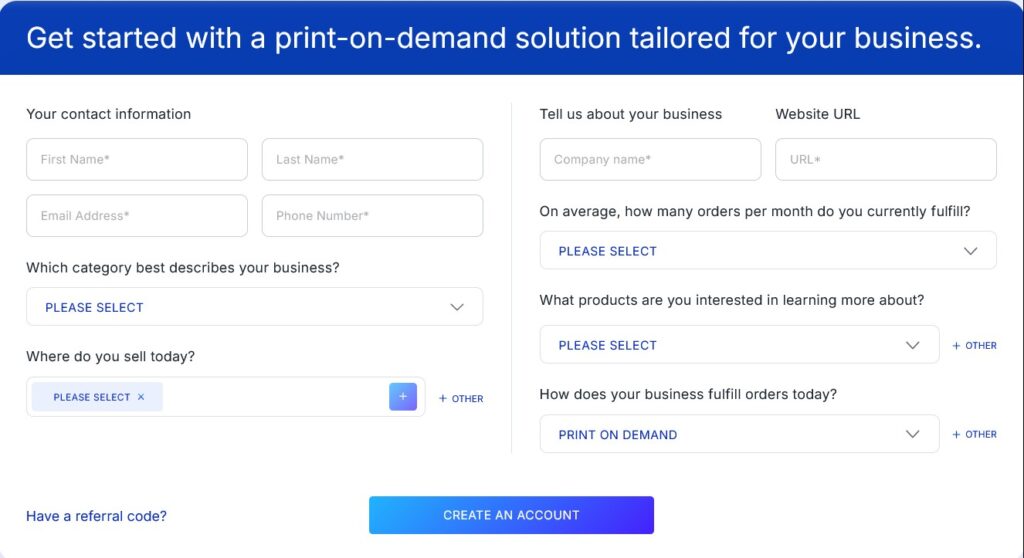
User Experiences and Case Studies:
- Growing Business: A mid-sized e-commerce brand scaled operations by 40% using Gooten’s flexible fulfillment network.
- Startup: Successfully launched a custom product line with minimal upfront investment, achieving a 30% profit margin.
- Online Store: Improved customer satisfaction by reducing shipping times through Gooten’s global network.
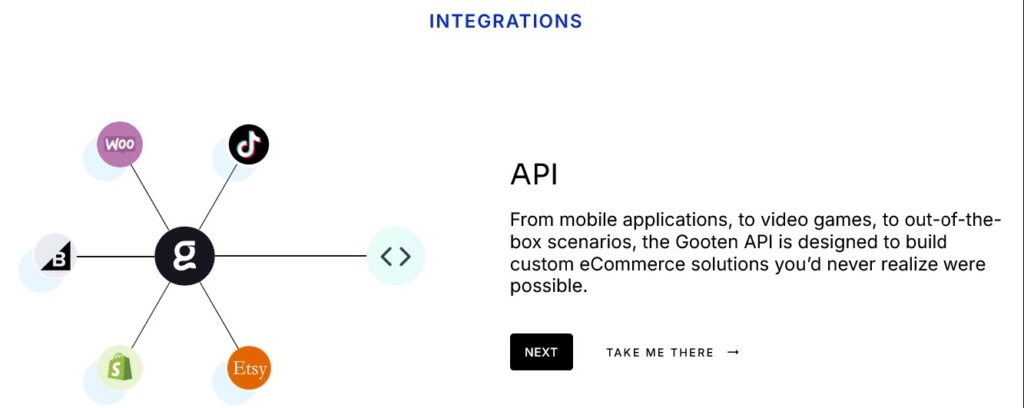
Pricing and Subscription:
- Free Plan: No monthly fees; pay per product sold.
- Product Prices: Varies by item; competitive pricing based on the chosen manufacturer.
- Additional Services: Optional branding and packaging customization available.
How to Choose the Right Print-on-Demand E-Commerce Platform for Your Business
Selecting the right Print-on-Demand E-Commerce Platform for your business depends on several factors including business size, industry, budget, and specific needs.
Here’s a guide to help you make an informed decision:
- Business Size: Consider platforms that scale according to your business size. For small businesses, platforms like Printify and Redbubble offer affordable and easy-to-use features. Larger enterprises might benefit from more comprehensive solutions like Gooten or Printful.
- Industry: Different industries may require specialized features. For example, artists and designers might prefer Redbubble for its creative community, while businesses with complex fulfillment needs might choose Gooten.
- Budget: Evaluate the pricing plans of each platform. Determine whether the cost aligns with your budget while offering the necessary features.
- Specific Needs: Identify the key features that are most critical for your business. Whether it’s product customization, global fulfillment, or social media integration, ensure the platform you choose excels in those areas.
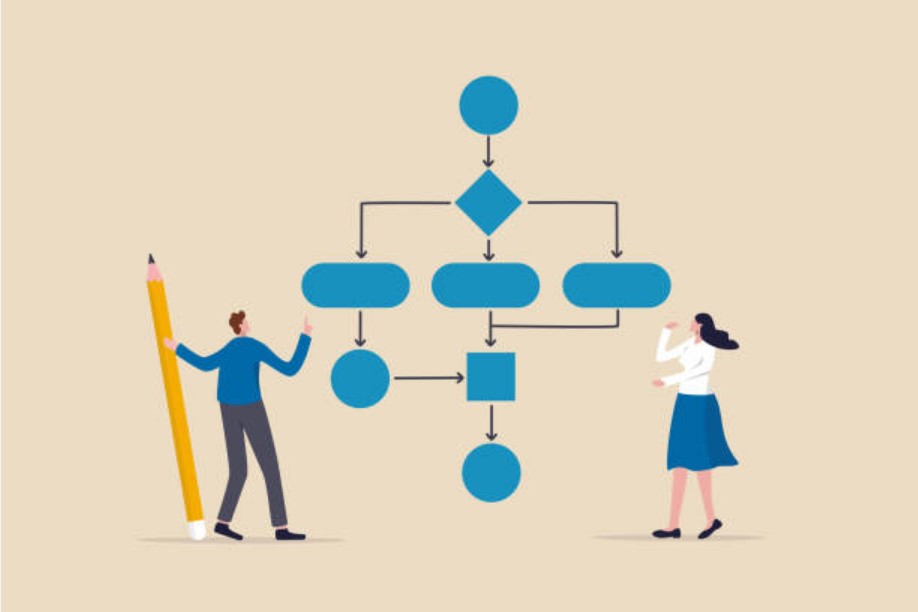
Case Studies and Success Stories
Real-world examples of businesses that have successfully implemented Print-on-Demand E-Commerce Platforms can provide valuable insights and inspiration.
Below are some notable success stories:
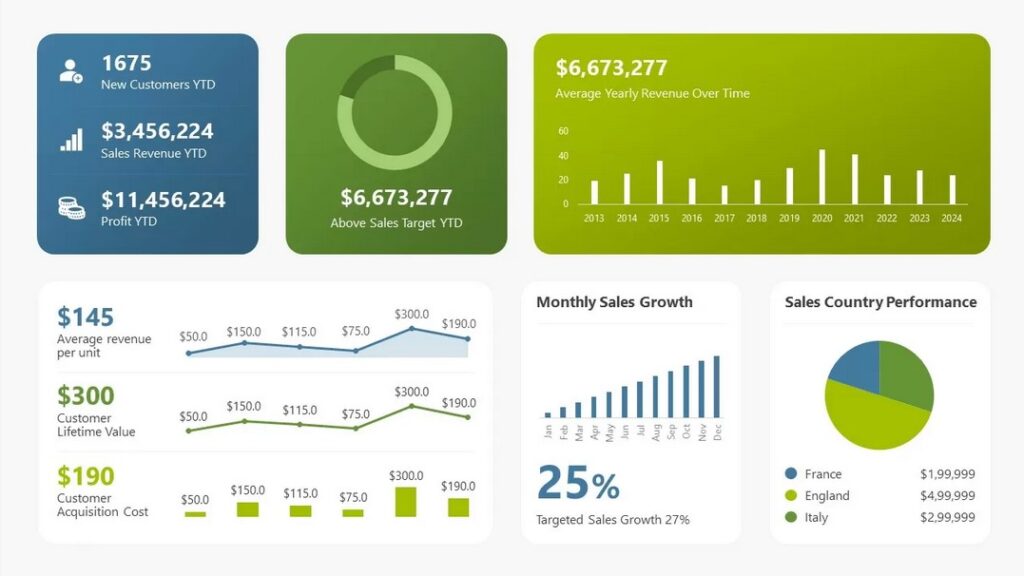
- Small Business: A local clothing brand used Printful to expand its product line, resulting in a 40% increase in online sales.
- Artist: Leveraged Redbubble’s global marketplace to sell unique artwork on apparel and accessories, leading to a 25% boost in earnings.
- Startup: Successfully launched a new product line on Gooten, scaling their operations by 30% within the first year.
Best Practices for Using Print-on-Demand E-Commerce Platforms
To maximize the effectiveness of your Print-on-Demand E-Commerce Platform, consider the following best practices:
- Product Mockups: Use high-quality product mockups to showcase your designs and attract customers. Platforms like Printful and Printify offer easy-to-use mockup generators.
- Global Fulfillment: Choose platforms with a global fulfillment network to reduce shipping times and costs, especially if you have an international customer base.
- Branding Options: If your brand identity is important, select a platform that offers customization options like custom labels, packaging, and inserts.
- Inventory Management: Even though print-on-demand platforms handle fulfillment, maintaining a product catalog with seasonal updates and limited editions can help drive repeat sales.
- Customer Feedback: Regularly review customer feedback to improve product offerings and identify any fulfillment issues that need addressing.
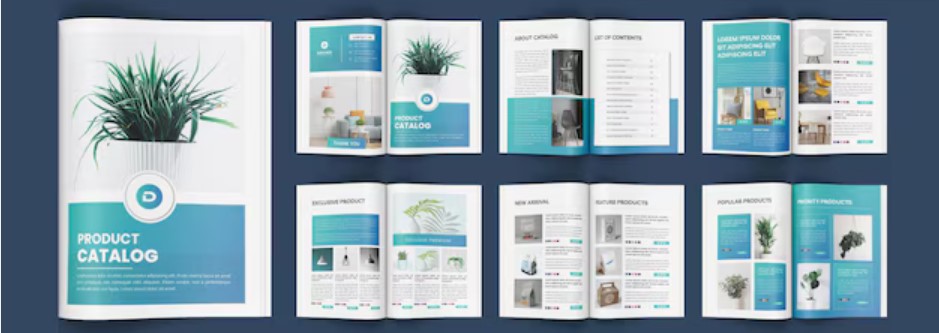
Benefits of Using Print-on-Demand E-Commerce Platforms in 2025
Using Print-on-Demand E-Commerce Platforms offers several benefits for businesses looking to expand their product offerings:
- Low Startup Costs: With no need to hold inventory, businesses can avoid the upfront costs associated with manufacturing and storage.
- Scalability: These platforms allow businesses to scale up or down easily, depending on demand, without the risk of overstocking.
- Diverse Product Offerings: Companies can offer a wide variety of products, from clothing to home decor, all customized to their brand.
- Automated Fulfillment: Orders are automatically processed and fulfilled by the platform, saving time and reducing operational overhead.
- Global Reach: Many platforms offer international shipping, allowing businesses to reach customers worldwide.
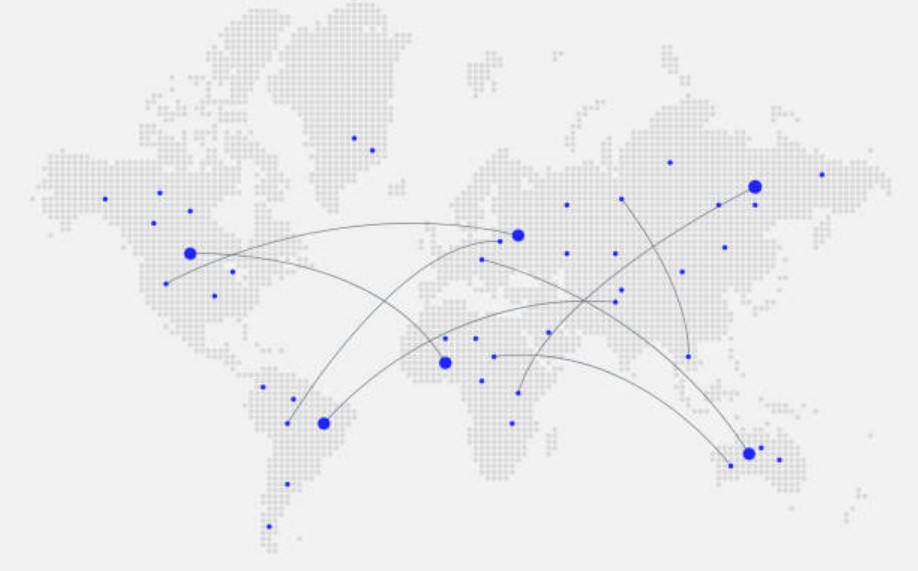
Challenges of Using Print-on-Demand E-Commerce Platforms in 2025
While there are many benefits, there are also some challenges associated with using Print-on-Demand E-Commerce Platforms:
- Lower Profit Margins: The costs associated with print-on-demand services can eat into profit margins, especially if pricing is not carefully managed.
- Quality Control: Since products are produced on-demand, businesses may have less control over the quality of the final product.
- Shipping Times: Depending on the fulfillment location, shipping times can be longer, which might affect customer satisfaction.
- Limited Customization: Some platforms offer limited customization options, which can restrict brand expression.
- Dependence on Third-Party Providers: Relying on third-party providers for production and fulfillment can be risky if the provider experiences issues.
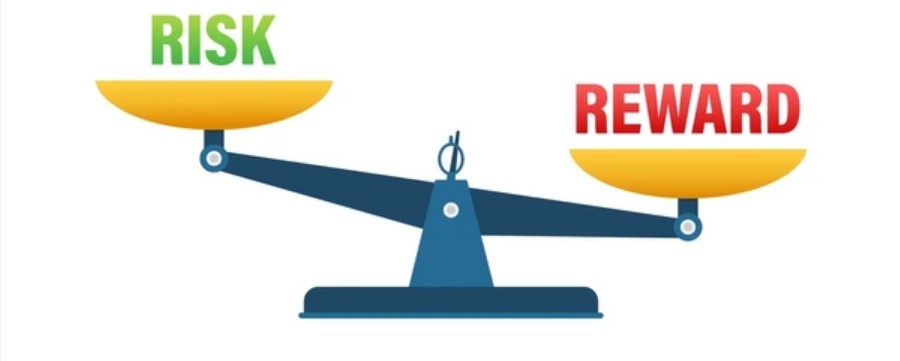
Compare Pricing, Product Selection, and Customization Options
When choosing the best Print-on-Demand E-Commerce Platform, it’s crucial to compare pricing, product selection, and customization options:
- Printful:
- Pricing: No monthly fees; pay per product sold.
- Product Selection: Over 200 customizable products.
- Customization: Offers extensive branding options, including custom labels and packaging.
- Printify:
- Pricing: Free plan; Premium plan at $29/month with discounts on products.
- Product Selection: Over 300 products with multiple print providers.
- Customization: Flexible options with varying quality depending on the provider.
- Teespring (Spring):
- Pricing: Free to use; profits made from sales.
- Product Selection: Apparel, accessories, home goods.
- Customization: Limited compared to other platforms; focus on social media integration.
- Redbubble:
- Pricing: Free to use; artists set their margins.
- Product Selection: Over 60 products, including unique items like stickers and wall art.
- Customization: Limited to design uploads; no additional branding options.
- Gooten:
- Pricing: No monthly fees; pay per product sold.
- Product Selection: Broad catalog with extensive customization.
- Customization: Highly customizable with global fulfillment options.
Analyze How Print-on-Demand Platforms Integrate with Marketing and Sales Tools
Print-on-Demand E-Commerce Platforms offer integrations that can streamline your marketing and sales efforts:
- Shopify Integration: Platforms like Printful and Printify integrate seamlessly with Shopify, allowing you to manage your store, track sales, and fulfill orders all in one place.
- Social Media Integration: Teespring’s integration with platforms like YouTube and Instagram enables creators to sell products directly through their social media accounts.
- Email Marketing: Some platforms offer integrations with email marketing tools like Mailchimp, allowing you to market your products directly to your audience.
- CRM Systems: Platforms like Gooten offer integrations with CRM systems, helping businesses manage customer relationships and track sales performance.
- Analytics Tools: Many platforms provide analytics dashboards or integrate with Google Analytics to help you track the performance of your products and campaigns.
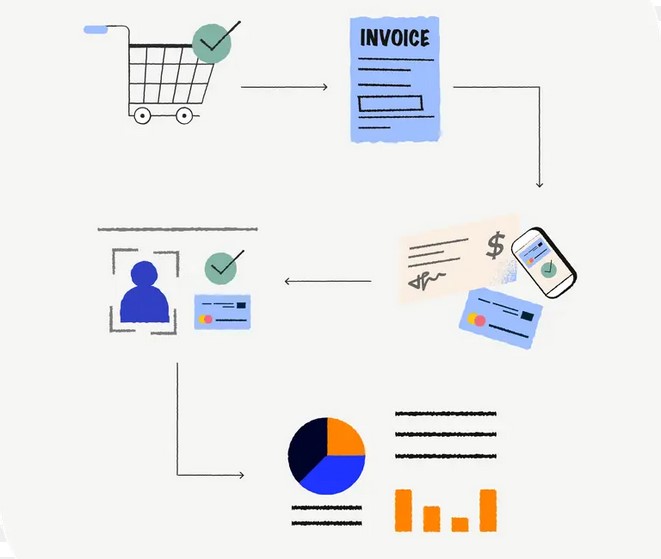
Step-by-Step Guide to Setting Up a Print-on-Demand Store
Setting up a store on Print-on-Demand E-Commerce Platforms can be straightforward if you follow these steps:
- Choose Your Platform: Select the print-on-demand platform that best suits your needs (e.g., Printful, Printify).
- Create an Account: Sign up for an account on the chosen platform.
- Integrate with Your E-Commerce Store: Connect the platform to your Shopify, WooCommerce, or Etsy store.
- Select Products: Choose the products you want to sell from the platform’s catalog.
- Design Your Products: Upload your designs using the platform’s mockup generator.
- Set Pricing: Determine your pricing strategy, considering both base costs and profit margins.
- Set Up Shipping: Configure your shipping options based on the platform’s fulfillment capabilities.
- Launch Your Store: Once everything is set up, launch your store and start promoting your products.
Expert Tips on Maximizing Profits with Print-on-Demand Services in 2025
Maximizing profits on Print-on-Demand E-Commerce Platforms requires strategic planning:
- Focus on Niche Markets: Target niche markets with specific product offerings to reduce competition and increase sales.
- Optimize Pricing: Balance your pricing to cover costs while remaining attractive to customers. Use premium pricing for unique designs.
- Utilize Marketing Tools: Leverage social media, email marketing, and SEO to drive traffic to your store.
- Offer Limited Editions: Create urgency by offering limited-edition products or seasonal items.
- Collect Customer Feedback: Regularly gather and analyze customer feedback to improve product offerings and customer satisfaction.
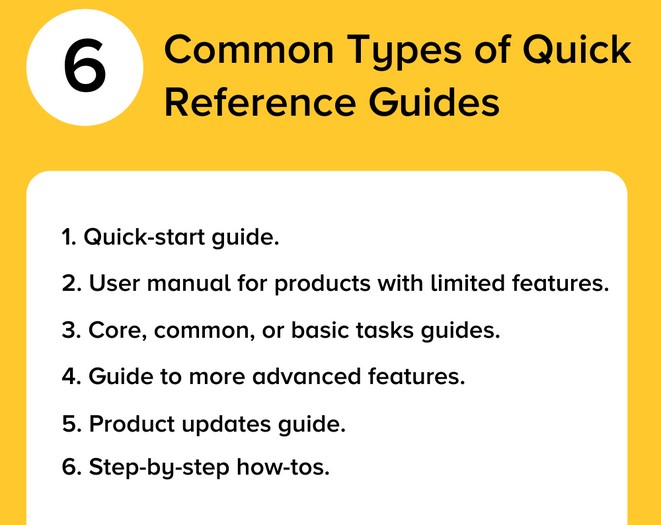
Case Study: A Successful Print-on-Demand Business Using a Top E-Commerce Platform
Case Study: XYZ Clothing
XYZ Clothing is a successful print-on-demand business that started using Print-on-Demand E-Commerce Platforms.
Here’s how they achieved success:
- Platform Selection: XYZ Clothing chose Printful for its extensive product range and reliable fulfillment network.
- Niche Focus: The company targeted a niche market of eco-friendly apparel, which resonated with their audience.
- Marketing Strategy: They leveraged Instagram and Pinterest for visual marketing, driving traffic to their Shopify store.
- Product Launch: XYZ Clothing introduced a limited-edition line, creating buzz and urgency.
- Customer Engagement: They used customer feedback to continually refine their product offerings, leading to repeat business and strong word-of-mouth referrals.
FAQ Section
Q1: What are Print-on-Demand E-Commerce Platforms?
A1: Print-on-Demand E-Commerce Platforms are services that allow businesses to create and sell custom products without holding any inventory. These platforms handle everything from printing and packaging to shipping directly to customers.
Q2: How do Print-on-Demand E-Commerce Platforms work?
A2: These platforms typically work by integrating with your online store (e.g., Shopify, WooCommerce). Once you create and list your custom products, orders placed by customers are automatically sent to the print-on-demand provider.
Q3: What are the benefits of using Print-on-Demand E-Commerce Platforms?
A3: The main benefits include low startup costs, as there’s no need to purchase inventory upfront; scalability, allowing you to easily expand your product offerings; and the ability to offer a wide range of customizable products.
Q4: What are the challenges of using Print-on-Demand E-Commerce Platforms?
A4: Some challenges include potentially lower profit margins due to the costs associated with print-on-demand services, less control over product quality, longer shipping times depending on the provider, and limited customization options for certain products.
Q5: How do I choose the best Print-on-Demand E-Commerce Platform?
A5: When choosing the best platform, consider factors such as the variety of products offered, integration options with your existing e-commerce store, fulfillment speed, customization options, and pricing. Platforms like Printful, Printify, Teespring, Redbubble, and Gooten each offer different strengths, so it’s important to match the platform’s features with your business needs.
Q6: Can I use multiple Print-on-Demand E-Commerce Platforms for my business?
A6: Yes, you can use multiple platforms to diversify your product offerings and reach different markets. For example, you might use Printful for high-quality apparel and Redbubble for unique art prints.
Q7: How profitable is a Print-on-Demand business?
A7: Profitability in a print-on-demand business depends on factors such as product pricing, production costs, and your marketing efforts. By optimizing your pricing strategy, focusing on niche markets, and effectively marketing your products, you can maximize your profit margins.
